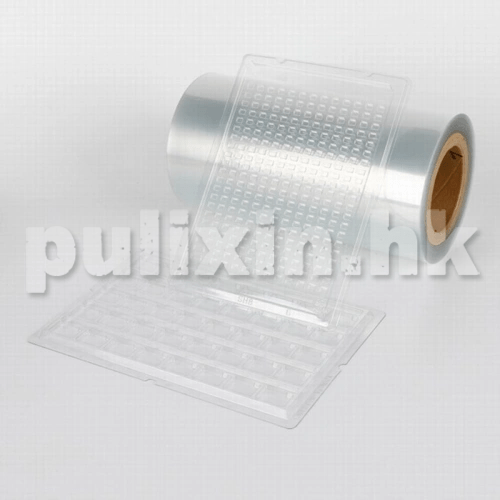Application of PET sheet and roll in food packaging industry

The manufacturing process of PET (Polyethylene Terephthalate) sheet rolls involves several steps, each contributing to the formation of sheets with specific characteristics suitable for various applications in the packaging, printing, and other industries. Here's an overview of the manufacturing process and characteristics of PET sheet rolls:
Manufacturing Process:
Raw Material Preparation: The process begins with the preparation of PET resin pellets, which are typically derived from petroleum feedstocks through polymerization processes. The PET resin pellets may undergo additional treatments or additives to enhance specific properties such as clarity, strength, or barrier properties.
Extrusion: The PET resin pellets are fed into an extruder, where they are melted and homogenized under high temperature and pressure. The molten PET is then forced through a flat die to form a continuous thin film, known as a PET sheet.
Calendering or Casting: The extruded PET sheet may undergo additional processing steps such as calendering or casting to achieve the desired thickness, smoothness, and surface finish. Calendering involves passing the extruded sheet between a series of heated rollers to compress and flatten it, while casting involves pouring the molten PET onto a cooled drum to solidify and form a sheet.
Cooling and Solidification: After calendering or casting, the PET sheet is cooled rapidly to solidify it into a stable form. Cooling methods may include air cooling or water quenching, depending on the desired characteristics of the final sheet.
Trimming and Slitting: Once solidified, the PET sheet is trimmed to remove any irregular edges or surface defects. The sheet may then be slit into narrower rolls of varying widths, depending on customer requirements and end-use applications.
Quality Control: Throughout the manufacturing process, quality control measures are implemented to ensure that the PET sheet meets specified standards for thickness, clarity, strength, and other properties. This may involve inline monitoring, sampling, and testing of the sheet at various stages of production.
Packaging and Storage: The finished PET sheet rolls are packaged and labeled for shipment to customers or storage in warehouses. Proper packaging and storage conditions are maintained to prevent damage, contamination, or degradation of the sheet rolls.
Characteristics of PET Sheet Rolls:
Clarity and Transparency: PET sheet rolls exhibit excellent clarity and transparency, allowing for high visibility of packaged products. This property makes them ideal for applications where product presentation and aesthetics are important.
Strength and Durability: PET sheet rolls are lightweight yet strong and durable, offering good mechanical properties such as tensile strength, tear resistance, and impact resistance. This makes them suitable for packaging applications requiring protection against handling, shipping, and storage stresses.
Chemical Resistance: PET sheet rolls have good resistance to chemicals, oils, greases, and solvents, making them suitable for packaging a wide range of products, including food, beverages, pharmaceuticals, and chemicals, without affecting product quality or safety.
Flexibility and Formability: PET sheet rolls are flexible and can be easily thermoformed, vacuum formed, or heat-sealed to create a variety of packaging shapes and formats, including bottles, trays, blister packs, clamshells, and shrink sleeves. This flexibility allows for creative packaging designs and innovations.
Temperature Resistance: PET sheet rolls can withstand a wide range of temperatures, from freezing cold to high heat, without losing their dimensional stability or mechanical properties. This makes them suitable for both cold and hot-fill packaging applications.
Recyclability: PET sheet rolls are fully recyclable and can be collected, sorted, and processed into recycled PET (rPET) for use in the production of new packaging materials. Recycling PET helps conserve natural resources, reduce waste, and minimize environmental impact.
In conclusion, the manufacturing process of PET sheet rolls involves extrusion, calendering or casting, cooling, trimming, slitting, quality control, packaging, and storage. The resulting PET sheet rolls exhibit characteristics such as clarity, strength, chemical resistance, flexibility, temperature resistance, and recyclability, making them ideal for a wide range of packaging applications across industries.

